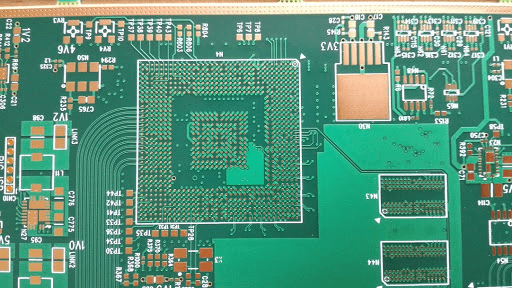In the last few years, there have been a lot of transformations in the printed circuit board manufacturing and PCB blueprint.
The maiden circuit boards were quite simple in their design, but recent technologies have brought new performance demands.
This has necessitated a more specialized design and manufacturing procedures.
One such practice is controlled impedance in PCB manufacturing, which is meant to regulate the speed of the signal to the quantity of power.
To get the best of these controlled impedance PCBs, you will need to partner with a reliable and trusted impedance control PCBs manufacturers.

What is the impedance?
Impedance measures the extent of opposition to the flow of an alternating current in an electric circuit.
It is the effective combination of the inductance and capacitance of an electric circuit at high frequency.
The unit of Impedance is in Ohms, alike to resistance. These are however different and should not be misconstrued to mean the same.
Resistance is a characteristic that is associated with the direct current while impedance is associated with alternating current.
Resonance of transmission tends to occur when a signal is passed from a conductor with a given impedance to another of the same impedance.
However, if there are differences in the impedance, depletion and reflection occur that worsen the signal.
How is impedance determined?
Several factors affect the trace impedance which is usually between 25 to 125 ohms.
These factors are:
1. The flow of the signal through vias
2. The length from the reference copper plane
3. The presence or absence of solder resist
4. The thickness of the core and prepreg materials on each side of the trace
5. Copper trace width and thickness
6. Passage of the signal through vias
7. Prepreg material and core dielectric constant
Impedance control PCBs manufacturers usually design a board that ensures that for high-frequency signals, the right combination of the trace and the stack-up is used.
This procedure is necessary to realize a target impedance value at a given tolerance in an impedance controlled PCBs.
The most technologically advanced electronics CAD design tools evaluate this automatically
What is impedance control?
The procedure of impedance control consists of evaluating the impedance of certain traces to ensure the PCBs are within the limit specified by impedance control PCBs manufacturers.
This technique is quite costly but has come to stay and spreading fast due to the continuously rising frequencies of electronic components.
It finds relevance in the following products, for example:
1. Motor control modules
2. Computers, tablets, mobile phones
3. Video signal processing
4. Analogue and digital telecommunications
5. Web boxes, TV, GPS, video games, digital cameras
Why control impedance on PCBs?
When a signal needs a precise impedance to operate appropriately, controlled impedance should be favored.
Keeping impedance steady on the complete electronic board of high-frequency devices is important to protect the transferred data from damage and to maintain the clearness of the signal.
Controlled impedance tends to have roles to play in a circuit or electronic devices with longer trace and higher frequency.
However, if this is not incorporated there could be an unexpected increase in switching time that can lead to a sudden error.
It is a difficult task to analyze uncontrolled impedance once the components are mounted on the circuit.
The tolerance ability of components differs depending on their batch. Their specifications can also be affected by variations in temperature which can lead to faults.
In such a condition, replacing the component may seem to be the ideal thing to do first but the source of the problem is the unfit trace impedance.
This is why it is imperative to do a check on the trace impedances and their tolerances early in the PCBs design
Designers and impedance control PCBs manufacturers must work together to guarantee the conformity of component values.
Conclusion
Impedance control is very important as seen in delivering optimum clarity of signals and functioning of the device.
As dealers or contactors in electronics and other related devices, your goal of purchase is to get value for your money.
In shopping for a bulk of these materials you will want to consider partnering with a reliable and trusted impedance control PCBs manufacturers.
By continuing to use the site you agree to our privacy policy Terms and Conditions.
Recruit global agents and distributors Join us